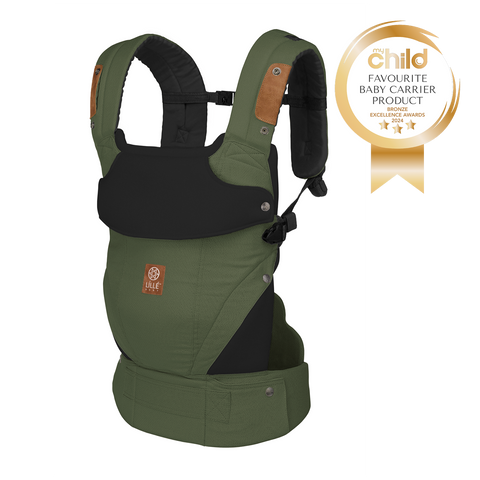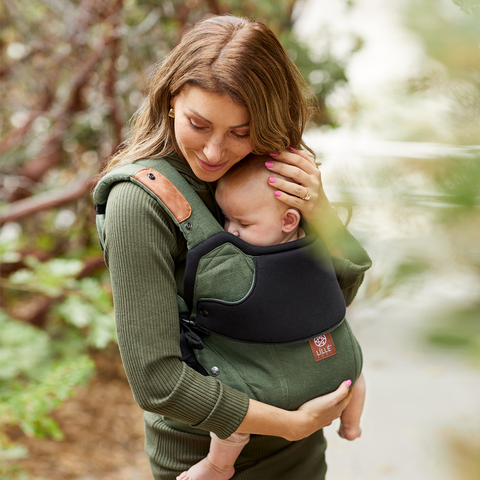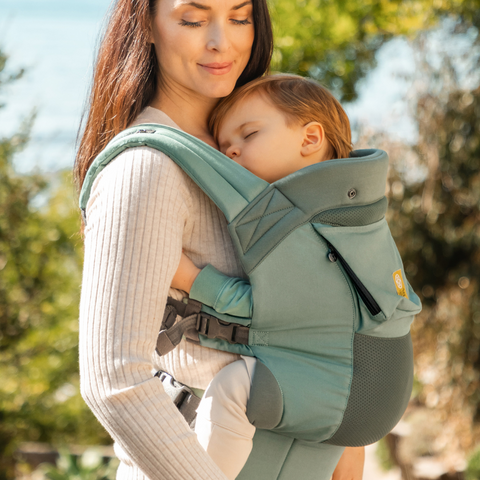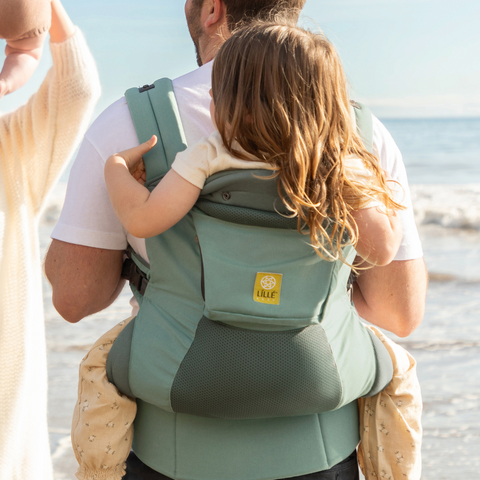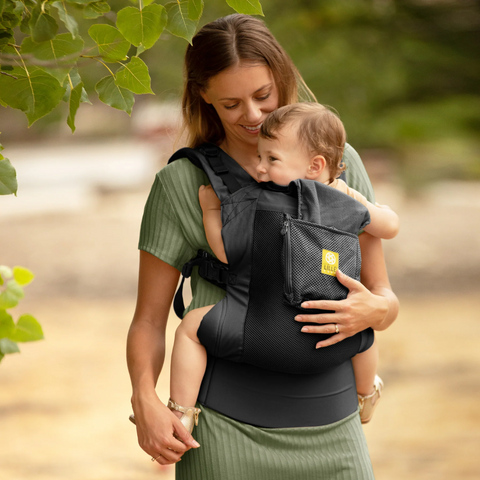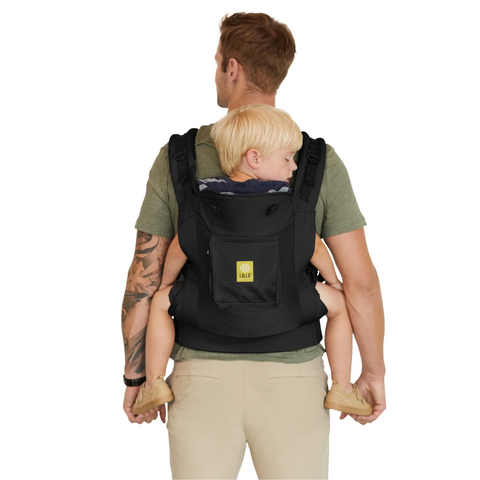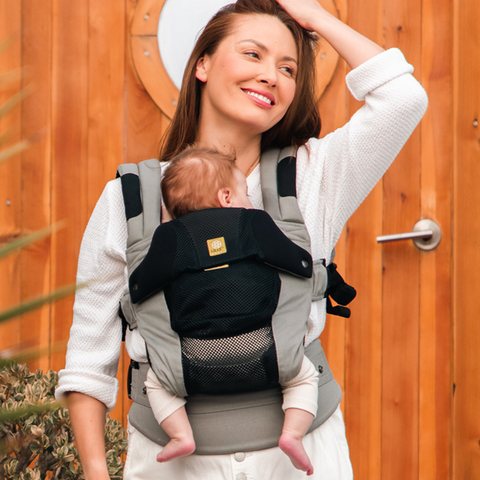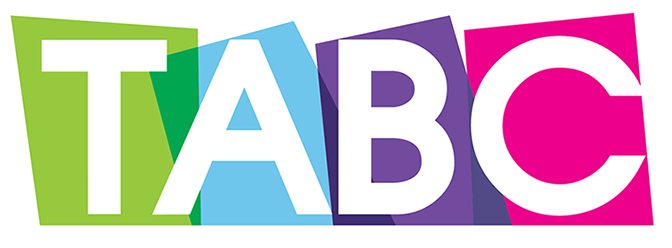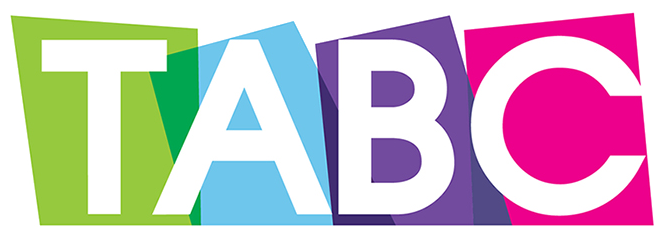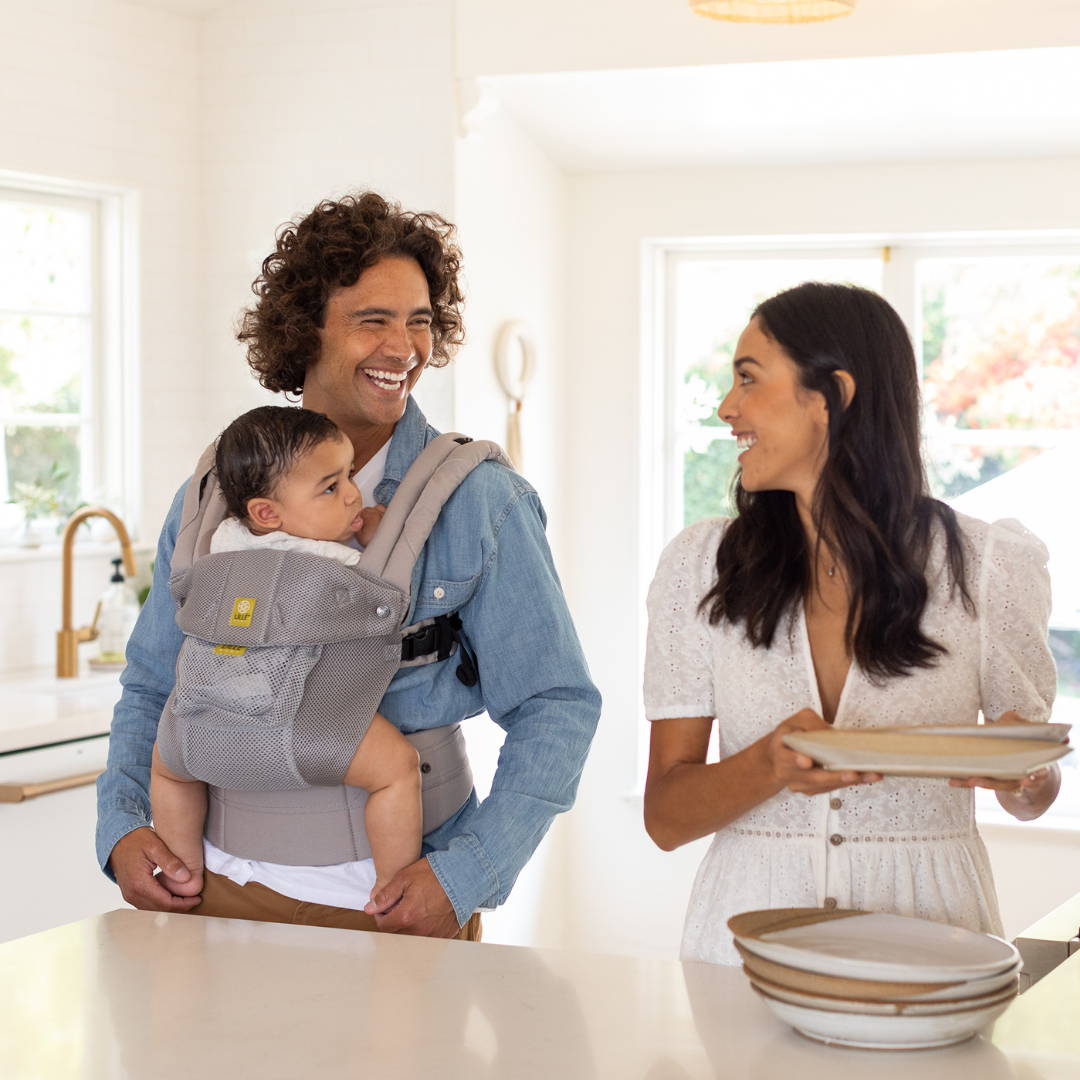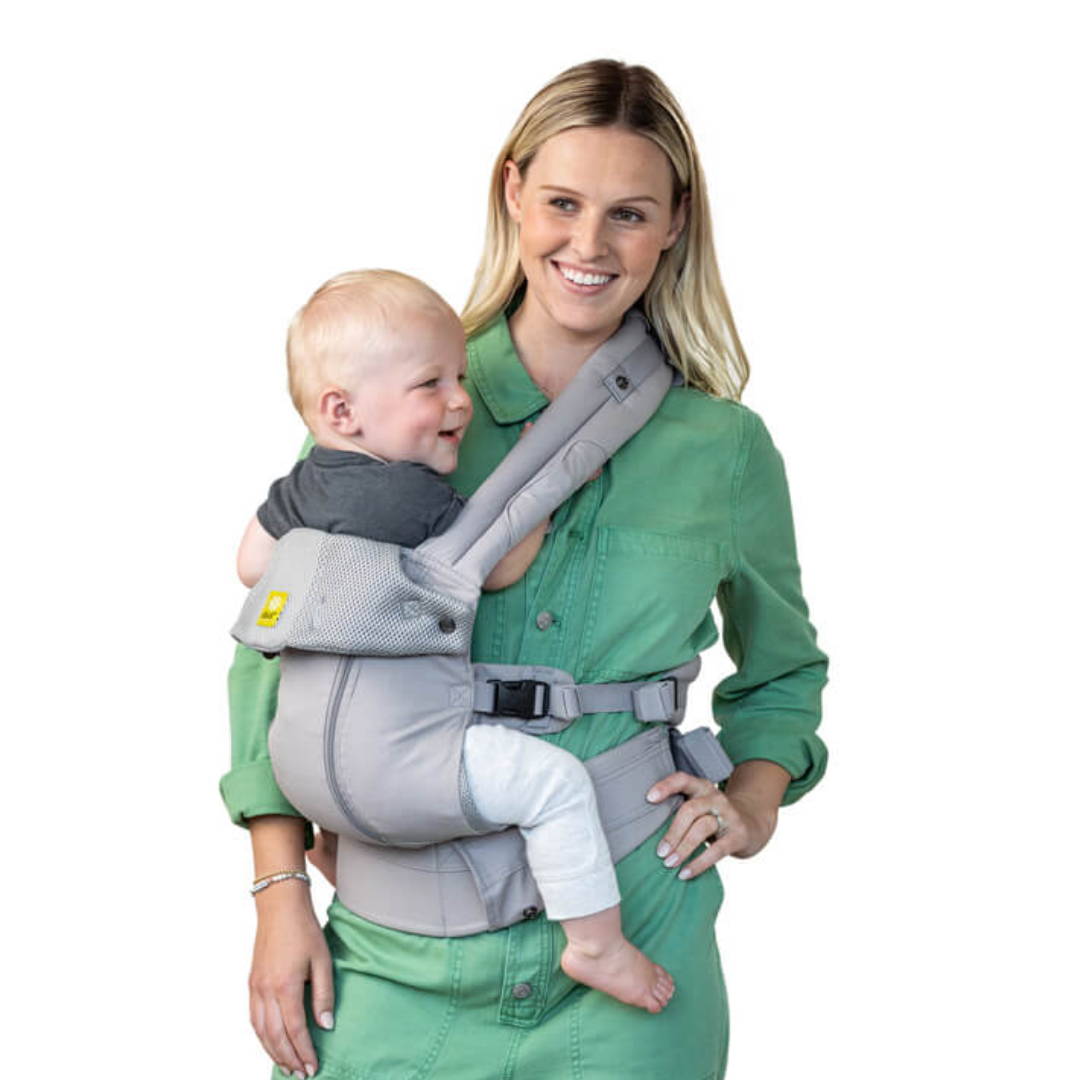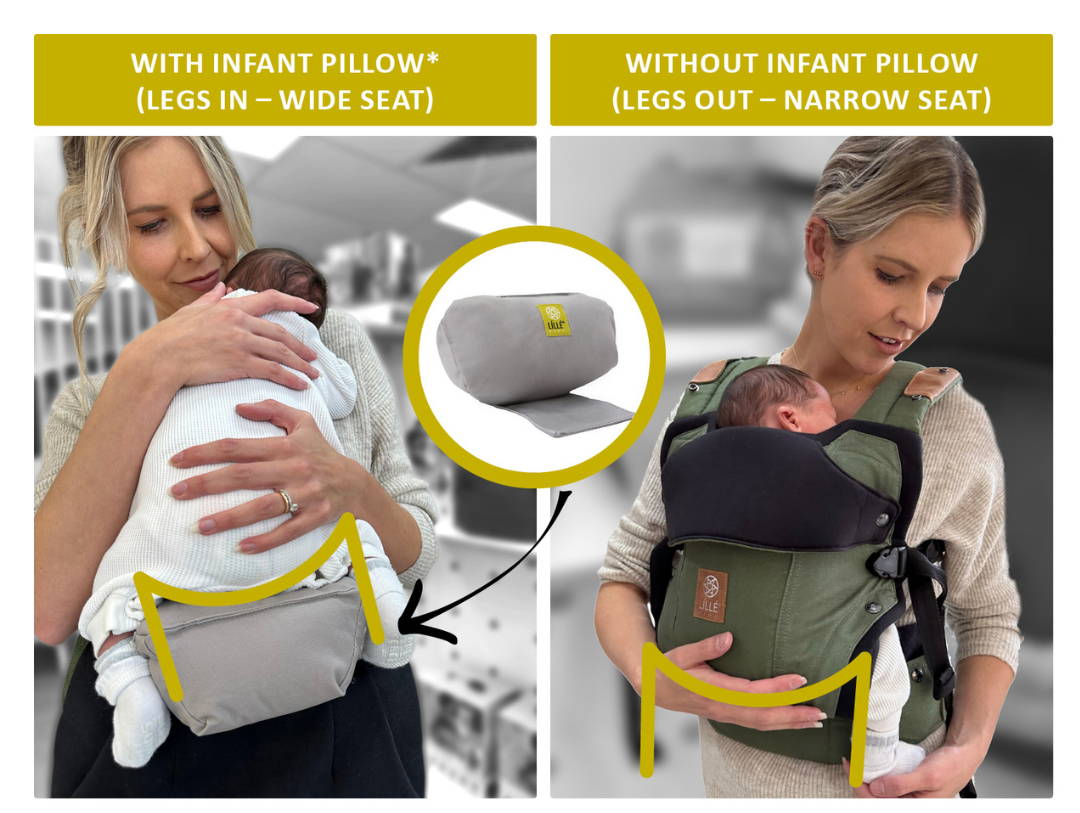• Fetal Carry: This position for newborns mimicking their position in the womb and may be extra soothing and comforting in their early days. Set your carrier to a wide seat and use an infant pillow (sold separately) to properly position newborn within the carrier.
• Inward Facing Carry (Narrow Seat/Babies): Appropriate from newborns through their first year. Set your carrier to a narrow position to support your little one from knee-to-knee.
• Inward Facing Carry (Wide Seat/Toddlers): If your child is wearing 18-month to 24-month-old clothing it may be time to change your seat size. Widen the carrier seat to ensure their legs are fully supported in a seated position and not dangling.
• Front-Facing Carry: Set your carrier to the narrow seat, fold down the head support, and turn your baby around to give them a view of the world. Baby should be at least 6 months old and demonstrate strong, consistent head support.
• Hip Carry: Similar to a ring sling, this position allows baby to see the world while still feeling cuddled by their parent. Babies supported in a hip carry should be at least 6 months old and demonstrate strong, consistent head support.
• Back Carry: It’s the ultimate piggy-back ride and a favorite position for toddlers. If your child falls asleep in back carry, please switch them to a front carry position so you can ensure they have adequate head and neck support.
